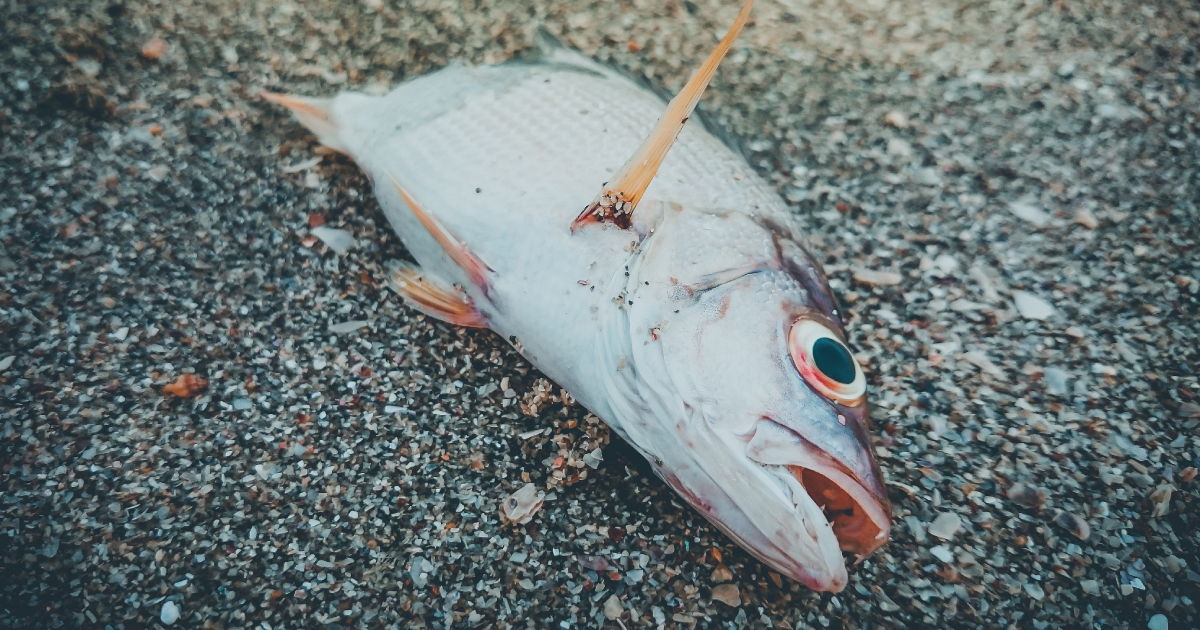
Food Fertilizer Punches the Gulf in the Gut
Record-setting rains have left Midwest cropland bogged down with so much water that many farmers have been forced to delay planting. Typically, 96% of U.S. corn crops are already planted come June, but in 2019 only 67% were planted as of early June — and in some states, like Indiana and Illinois, rates were as low as 31% and 45%, respectively.
July 2, 2019 | Source: Mercola.com | by Dr. Joseph Mercola
Record-setting rains have left Midwest cropland bogged down with so much water that many farmers have been forced to delay planting. Typically, 96% of U.S. corn crops are already planted come June,1 but in 2019 only 67% were planted as of early June — and in some states, like Indiana and Illinois, rates were as low as 31% and 45%, respectively.2
The implications of the deluge of rain, and resulting flooding, spread far beyond the agricultural fields themselves, however. There are 18 major river basins3 in the continental U.S., with the largest belonging to rivers that feed the Mississippi river.4 What is upstream will travel downstream, and this includes runoff from agricultural lands.
Pollution in the form of agricultural runoff has been linked to an excess of nutrients in waterways that leads to algae overgrowth, depleting the water of oxygen and killing fish and other marine life in expansive dead zones.
Rains may lead to ‘very large’ dead zone in Gulf of Mexico
With the high levels of spring and summer rains seen in many parts of the Midwest, scientists are predicting that the dead zone in the Gulf of Mexico will be close in size to the record-setting 8,776 square-mile dead zone measured in 2017.
The National Oceanic and Atmospheric Administration (NOAA) estimated that the summer 2019 dead zone in the Gulf of Mexico will reach roughly 7,829 miles, which is about the size of the state of Massachusetts, and bigger than the 5,770 square-mile five-year average size.5 According to NOAA:6
“A major factor contributing to the large dead zone this year is the abnormally high amount of spring rainfall in many parts of the Mississippi River watershed, which led to record high river flows and much larger nutrient loading to the Gulf of Mexico. This past May, discharge in the Mississippi and Atchafalaya rivers was about 67% above the long-term average between 1980 and 2018.
USGS [U.S. Geological Survey] estimates that this larger-than average river discharge carried 156,000 metric tons of nitrate and 25,300 metric tons of phosphorus into the Gulf of Mexico in May alone. These nitrate loads were about 18% above the long-term average, and phosphorus loads were about 49% above the long-term average.”
According to the U.S. Environmental Protection Agency (EPA), manure from industrial agriculture is the primary source of nitrogen and phosphorus in surface waterways and groundwater.7 However, runoff from chemical fertilizers spread on agricultural fields also contributes.
In dead zones, animals in the area can suffocate and die, with those unable to easily swim away, such as burrowing crabs and worms in the sediment, being most affected. Other species, like shrimp and eels, may be forced to swim to shallower waters to find oxygen.8
In hypoxic marine areas, or waters with low or depleted oxygen levels (defined in the U.S. as dissolved oxygen equal or less than 2 mg/L, or parts per million (ppm)9), widespread die-offs of fish and shellfish, along with slowed and stunted growth, is common.10
In economic terms, trends in the prices of brown shrimp in the Gulf of Mexico reveal a pattern of spikes in prices of large shrimp compared to smaller ones in the late spring and summer — when the dead zones occur.11
“Because fishermen are catching more small shrimp and fewer large ones during these months, the price of small shrimp goes down and the price of large ones goes up, creating a short-term disturbance in the market that we can track,” study author Martin D. Smith at Duke’s Nicholas School of the Environment explained.12 But that’s only one of the risks of agricultural pollution to U.S. waterways.
65% of US coastal waters degraded by excessive nutrients
Excess nitrogen and phosphorus from agricultural fertilizer runoff and other sources have led to moderate to severe degradation in 65% of the estuaries and coastal waters in the U.S., according to NOAA.13 The excess nutrient load kicks off a process known as eutrophication, fueling the growth of large algae blooms.
Some of the algae is toxic in itself, but they also form large mats that block sunlight from reaching the water. When the algae die, the problems only get worse, as the decomposing biomass sucks dissolved oxygen out of the water near the bottom, leading to hypoxic, low-oxygen zones. Any creatures that aren’t able to swim away may suffocate and die.14
Eutrophication can also cause the production of carbon dioxide, which leads to a lowered pH in seawater sometimes referred to as ocean acidification. “This slows the growth of fish and shellfish, may prevent shell formation in bivalve mollusks, and reduces the catch of commercial and recreational fisheries, leading to smaller harvests and more expensive seafood,” NOAA explains.15
Further, at least one study has found that hypoxia in the northern Gulf of Mexico could reduce the abundance of Atlantic croaker by 25 percent over a 140-year period.16
Various solutions have been proposed, including enlisting farmed oysters to help reduce nutrients in the water.17 However, their efficiency at removing nutrients was comparable to that achieved by using agricultural and stormwater best management practices.
According to Louisiana State University marine ecologist Nancy Rabalais, who worked on forecasts that suggest the Gulf of Mexico dead zone could be even larger in scale than NOAA’s estimate at 8,717 square miles in summer 2019, treating the problem at its source — in the farms and cities of the Mississippi watershed — is the only long-term solution to stopping the Gulf of Mexico dead zone.18
